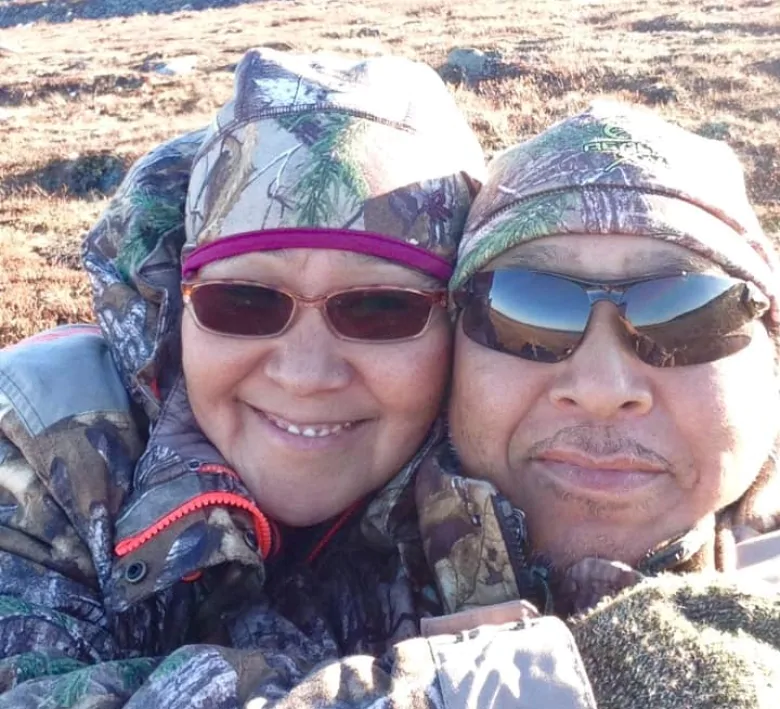150 km from anywhere, N.W.T. homesteader has front seat to climate change

For 20 years, John Koadloak has lived in near total isolation.
He shares a shack with his wife, Mercie, and their dog, more than 150 kilometres from the nearest community, close to the Nunavut-Northwest Territories border.
Koadloak, who calls himself a homesteader, lives with a simple routine — but he’s always busy.
“First thing I do, usually, is look out the window, just to … do a weather check,” he said. “Stoke the fire, make coffee … [then we] talk about our day and what we’re going to do.”
“It’s non-stop here, where we are,” he said. “Every other day we have to go out, punch a hole in the ice, about four feet of chiseling … so we can have fresh water.”
“We’ll jig a little bit, and … catch fresh fish for supper. That’s how we live.”
Koadloak’s shack gets its power from solar panels and a wind turbine.
“Otherwise, we would’ve been investing a lot of money just into fuel alone,” he said.
In the winter, they rely on a diesel generator to top up their batteries. Their heat comes mostly from burning wood, which Koadloak scavenges from “old cribbing and baseboards” left at the nearby former Lupin gold mine.
“We have high speed internet, satellite TV, and a working phone,” he said. “It’s just like anywhere else, living. We just have to do a little extra work.”

Front seat to climate change
Koadloak’s isolation and dependence on the land means he sees changes in the environment first-hand.
In the last 20 years, he said, bad weather is becoming more common.
“Every year, it seems to be getting worse and worse,” he said. “We’re getting colder and colder, but not for very long.”
Extreme cold is more common in the wintertime he said, making ice brittle and easy to chisel. But snowfall is less common, meaning the ice gets much thicker, much faster — more work for Koadloak.
Paradoxically, at the same time, Koadloak said the lake is freezing later “than ever before,” and he’s seeing “really early spring melt and thaw.”
“The weather patterns have really changed over the years,” he said. “I’m usually out hunting or travelling … but this year, I’m hardly doing any of that because there’s no snow.”

Learning from the land
Koadloak said the local game has been changing over the years as well.
“We have everything except for bison,” he said. “We have muskox and caribou, lots of wolves [and] wolverines, a lot of foxes, a lot of rabbits, and we’re getting a lot of birds as well.”
“In the springtime, we’re getting a lot of eagles as well … They’re starting to be more common up here than they used to be.”
Koadloak said living off the land allows him to “keep an eye on the animals [and] the environment, every day.
“We come to connect with our land and the animals,” he said.
Koadloak said “instead of summer camps,” kids should get a chance to learn to live off the land, as he does.
“I want people to know it’s a good life, it’s healthy living, and I wish more people would pursue in their lifetime to at least experience a year out on the land, just to get a feel for what their ancestors did,” he said.
“It can be a real hard life, but it is so rewarding. It gives you a sense of belonging to the land.”






